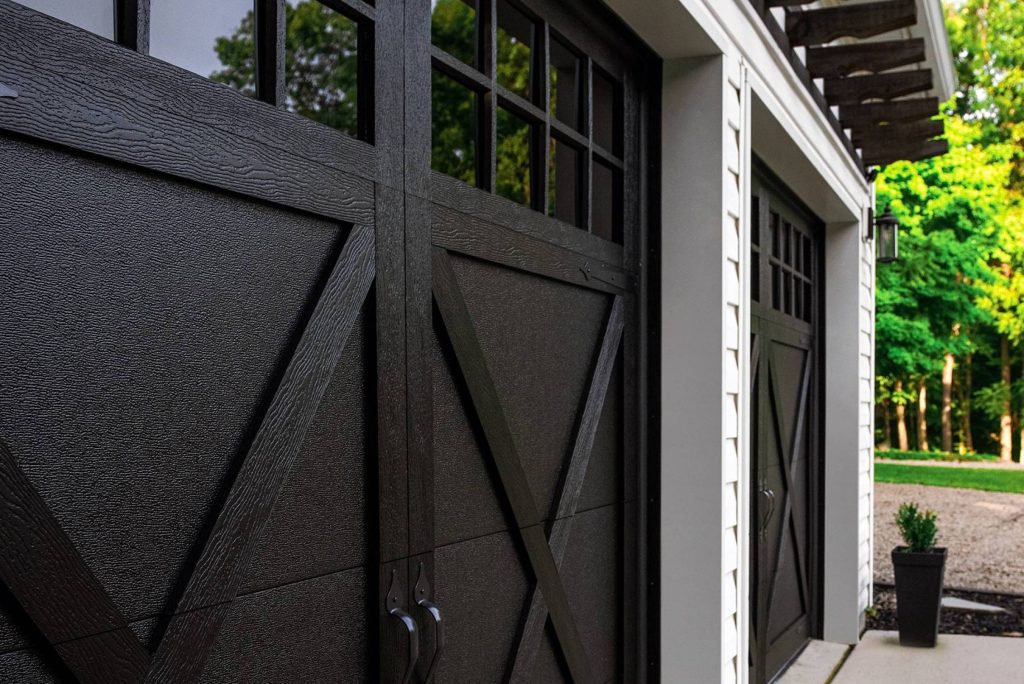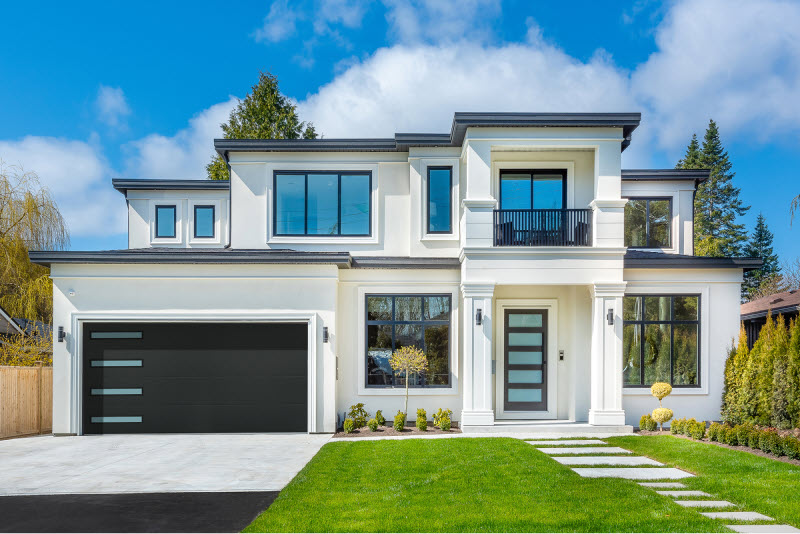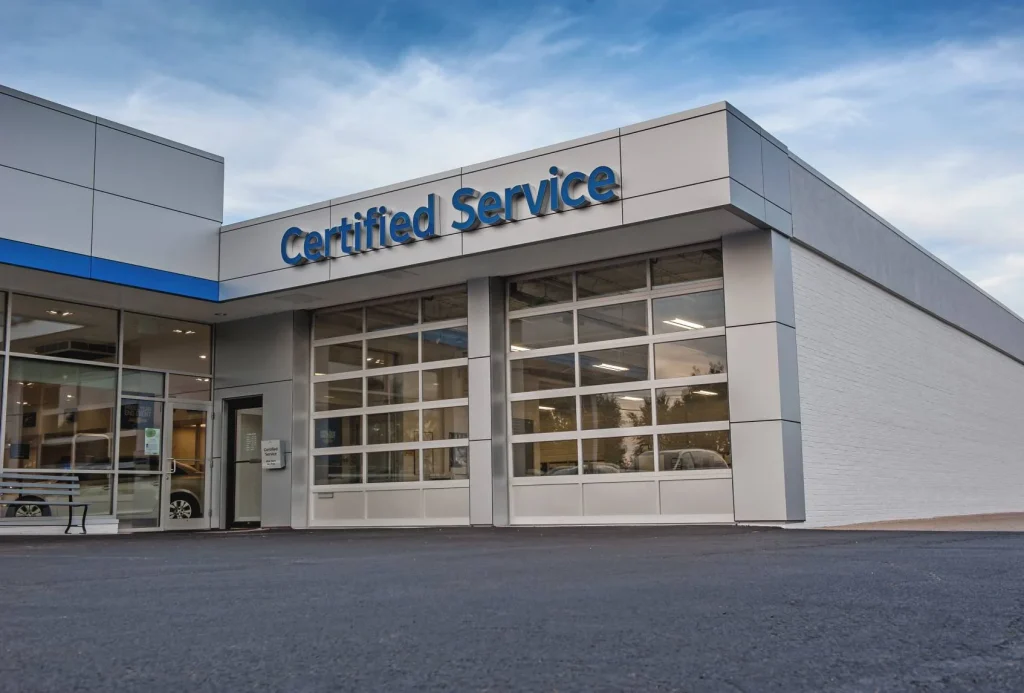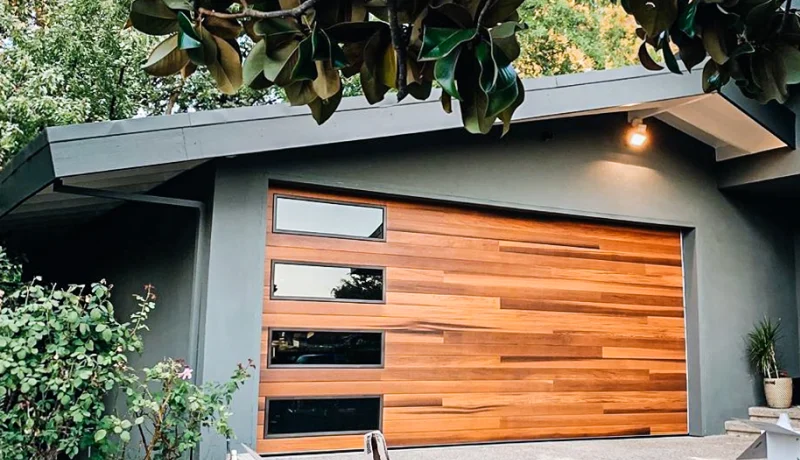Carriage Doors Garage in Highland Park, MI
Elegant Carriage-Style Doors for a Timeless Look
Locally Based, Regionally Trusted
Since 2017
Schedule A Service Request
We Serve Businesses In And Around The Following Cities:
About Carriage Doors Garage
Comprehensive Guide to Carriage Doors Garage for Commercial Properties in Highland Park
Understanding Carriage Doors Garage
In the bustling commercial landscape of Highland Park, businesses are constantly seeking ways to merge functionality with aesthetic appeal. The carriage doors garage offers an innovative solution to this need, providing both an elegant appearance and practical utility that can enhance the overall value of any commercial property. Originating from barns and carriages in older times, these doors have transcended their traditional roots to become a popular choice for modern commercial spaces. Known for their distinctive charm and robust construction, carriage garage doors represent a perfect blend of historical elegance and contemporary design.
Commercial establishments in Highland Park and beyond are increasingly turning to this style to set their premises apart from the competition. The stunning exterior of carriage house doors garage can captivate passersby, entice potential clients, and create an inviting atmosphere that speaks to the high standards of the business within. But beyond their aesthetic appeal, carriage house garage doors offer unparalleled functionality that meets the needs of busy commercial operations.
The Process of Installing Carriage Style Garage Doors
The installation of carriage style garage doors is a carefully orchestrated process that begins with understanding the unique requirements of each commercial space. Whether it’s a boutique retail shop looking to enhance its curb appeal or a bustling warehouse requiring robust functionality, the process starts with an expert assessment of the site. This involves evaluating the architectural style of the building, the typical daily operations, and any specific security or insulation needs.
Once these preliminary assessments are complete, businesses in Highland Park are encouraged to engage professionals, such as D&J Contracting, known for their specialized approach to carriage doors garage installations. Their expertise ensures that the installation not only fits the structural parameters but also aligns with the commercial aesthetic goals. The next step involves selecting the right materials and design that best suit the business. Options include wood, steel, or a combination of materials, each offering distinct benefits in terms of durability, insulation, and maintenance.
After all decisions regarding materials and design are finalized, the installation phase begins. This process is meticulous, often requiring precise measurements and a keen eye for detail to ensure that the doors operate seamlessly and withstand the rigors of daily commercial use. The final step is a thorough inspection to guarantee that every component functions perfectly, providing businesses with carriage house garage doors that are both visually stunning and incredibly durable.
Benefits of Carriage Garage Doors for Businesses
The adoption of carriage garage doors by commercial entities in Highland Park is driven by a range of benefits that extend beyond mere aesthetics. One of the primary advantages is their durability. Built to last, these doors can withstand harsh weather conditions and daily wear, which is particularly important in a commercial setting where high traffic is common. Their robust construction reduces the need for frequent repairs, offering long-term savings on maintenance costs.
Another significant benefit of carriage house doors garage is the enhancement of security. With advanced locking mechanisms and sturdy materials, these doors provide an added layer of protection against unauthorized access, helping businesses safeguard their assets effectively. Moreover, carriage garage doors offer excellent insulation properties, which can be crucial for businesses looking to manage energy costs efficiently. This is especially relevant in Highland Park, where temperatures can vary significantly.
In addition to practicality and security, carriage style garage doors contribute positively to property value. The classic, yet contemporary feel of these doors can significantly boost the curb appeal of any commercial property, potentially increasing its market value. For businesses, this means not only impressing clients and customers but also achieving a higher return on investment when it comes to property sales or leasing.
Real-World Applications of Carriage Doors Garage
The versatility of carriage doors garage makes them suitable for various commercial applications. Take, for instance, the thriving artistic community in Highland Park, where galleries and studios seek to establish a welcoming and inspiring environment. The traditional yet stylish design of carriage house garage doors can perfectly complement the creative aura of such spaces, inviting patrons to explore the art within.
In another real-world application, consider high-end retail stores that aim to create a luxurious and bespoke shopping experience. The sophisticated appearance of carriage style doors can form an integral part of a store's brand identity, contributing to a high-end, boutique feel that appeals to discerning customers.
Beyond retail and art spaces, carriage garage doors are a practical choice for the hospitality industry as well. Hotels and event centers in Highland Park can utilize these doors to enhance their venue’s exclusivity and charm. They offer the flexibility of accommodating large groups and equipment due to their wide and high-opening capabilities, making them ideal for event spaces that regularly host weddings, conferences, and other significant gatherings.
A lesser-known but highly effective application of carriage house garage doors lies in mixed-use buildings. In an area like Highland Park, where residential and commercial spaces often coexist, these doors can serve as a seamless transition between residential living areas and commercial establishments, offering privacy, security, and an aesthetic that ties both function and form together beautifully.
Choosing the Right Service Provider
While the idea of a carriage doors garage may seem straightforward to obtain, the complexity of their installation necessitates choosing the right service provider. It's not just about purchasing a product; it’s about finding a partner that understands the intricacies of design and construction. Selecting a reliable company such as D&J Contracting can make a significant difference in the quality and satisfaction of the final installation.
With years of experience in the field, D&J Contracting provides a comprehensive service that covers every aspect of the process—from initial consultation to final inspection. Their team’s expertise allows for customized solutions that meet the unique needs of each business in Highland Park, whether those needs are driven by a focus on aesthetics, functionality, or both.
Choosing such a company ensures that businesses receive the full spectrum of benefits that carriage style garage doors have to offer. This includes leveraging cutting-edge locking mechanisms, selecting the most suitable materials, optimizing door configurations for energy efficiency, and ensuring that each installation complies with local building codes and standards.
It's an investment not just in a product, but in peace of mind, knowing that the final result will align perfectly with the commercial aspirations and practical requirements of the business. Quality service providers like D&J Contracting are adept at transforming an architectural vision into reality, offering guidance at every step of the process.
As businesses in Highland Park continue to evolve and seek new ways to stand out and protect their investments, the choice of installing carriage doors garage can offer unparalleled benefits. With their unique blend of traditional charm and modern functionality, carriage doors garage stand as a testament to innovation's role in enhancing the commercial real estate landscape. By considering both aesthetic and operational advantages, businesses can create an impressive facade, enjoy long-term cost savings, and ensure a secure environment all at once. Engaging with reputable professionals who understand the nuances of carriage door installations can pave the way for a seamless integration into any commercial property.
Concluding with a final thought, the adoption of carriage style garage doors in commercial settings offers a rich tapestry of benefits that intertwine practicality with visual appeal. Businesses seeking to make a bold statement, while ensuring functionality, will find this an invaluable addition. If you’re considering this unique choice for your commercial property, consult industry leaders like D&J Contracting to explore the myriad of options available to your business and experience the transformative impact of carriage house garage doors.
Carriage Doors Garage Gallery



Call Us Today to receive your Free Quote for Carriage Doors Garage in Highland Park
Serving: Highland Park, Michigan

About Highland Park, Michigan
The area that became Highland Park began as a small farming community, on a large ridge at what is now Woodward Avenue and Highland, six miles (9.7 km) north of Detroit. In 1818, prominent Detroit judge Augustus B. Woodward bought the ridge, and platted the village of Woodwardville in 1825. The development of the village failed. Another Detroit judge, Benjamin F. H. Witherell, son of Michigan Supreme Court justice James Witherell, attempted to found a village platted as Cassandra on this site in 1836, but this plan also failed.
By 1860, the settlement was given a post office under the name of Whitewood. After a succession of closures and reopenings of the rural post office, the settlement was finally incorporated as a village within Greenfield Township and Hamtramck Township under the name of Highland Park in 1889.
In 1907, Henry Ford purchased 160 acres (65 ha) just north of Manchester Street between Woodward Avenue and Oakland Street to build an automobile plant. Construction of the Highland Park Ford Plant was completed in 1909, and the area's population dramatically increased in 1913, when Henry Ford opened the plant's first assembly line. The village of Highland Park was incorporated as a city in 1918 to protect its tax base, including its successful Ford plant, from Detroit's expanding boundaries.
In 1910, Highland Park, then a village, had 4,120 residents. Between 1910 and 1920 during the boom associated with the automobile industry, Highland Park's population grew to about 46,500, an increase of 1,081 percent, reaching its peak around 1927. The growth of Highland Park and neighboring Hamtramck broke records for increases of population; both municipalities withstood annexation efforts from Detroit. In 1925, Chrysler Corporation was founded in Highland Park. It purchased the city's Brush-Maxwell plant, which would eventually expand to 150 acres and serve as the site of the company's headquarters for the next 70 years.
Arthur Lupp of Highland Park founded the Michigan branch of the Black Legion in 1931; it was a secret vigilante group related to the Ku Klux Klan, which had been prominent in Detroit in the 1920s. The Legion had a similar nativist bent and its members were opposed to immigrants, Catholics, Jews, blacks, labor organizers, etc. Many public and business officials of Highland Park, including the chief of police, a mayor, and a city councilman, joined this group. Lupp and others were among the 48 men indicted and convicted following the murder of Charles Poole in May 1936; eleven were convicted in that murder. Investigations revealed the Legion had been involved in many other murders or conspiracies to murder during the previous three years, for which another 37 men were convicted. These convictions ended the reign of the Legion.
In 1944, the Davison Freeway was opened as the country's first modern depressed urban freeway, running through the center of the city. It was completely reconstructed and widened in 1996 and 1997 to improve its safety.
Ford Motor Company demolished large sections of its Highland Park plant in the late 1950s. With the loss of industrial jobs, the city suffered many of the same difficulties as Detroit: declines in population and tax base accompanied by an increase in street crime. White flight from the city accelerated after the 1967 Detroit 12th Street Riot. Ford's last operation at the factory, the production of tractors at its Model T plant, was discontinued in 1973, and in 1981 the entire property was sold to a private developer for general industrial usage. The city population was majority black and impoverished by the 1980s. Chrysler, the city's last major private sector employer, moved its corporate headquarters from Highland Park to Auburn Hills between 1991 and 1993, paying the city $44 million in compensation. The move dislocated a total of 6,000 jobs over this period.
On June 19, 1982, drafter Vincent Chin was beaten to death in Highland Park by two automotive workers in retaliation for Japan's success in the automotive industry. The killing was considered a racially-motivated hate crime.
Known as "The City of Trees", the town was thickly forested until the 1970s. The spread of Dutch elm disease required many old trees to be cut down.
From 2001 to 2009, the city was controlled by an emergency financial manager appointed by the State of Michigan due to mounting financial stress.
In August 2011, more than two-thirds of the street lights in Highland Park's residential neighborhoods and alleys were removed by the city, due to an inability to pay a $60,000 per month electric bill. The street lights were not only turned off, but decommissioned, or removed from their posts. The city advised residents to keep porch lights on to deter crime. The following year, a local 501(c)(3) nonprofit organization, Soulardarity, was formed to restore streetlighting to the city's residential neighborhoods and alleyways in the form of solar street lights.
On November 20, 2013, the Detroit Water and Sewerage Department filed a lawsuit against the City of Highland Park regarding unpaid sewage services and water totaling $17.7 million. In 2020, the two cities settled out of court for an unspecified amount.
According to the United States Census Bureau, the city has an area of 2.971 square miles (7.69 km), all land.
Highland Park is approximately 6 miles (10 km) north-northwest from Downtown Detroit. It is bounded by McNichols Road (6 Mile Road) to the north, Grand Trunk Western Railroad Holly Subdivision tracks to the east, the alleys of Tuxedo and Tennyson streets to the south, and the Lodge Freeway and Thompson Street to the west.
| Census | Pop. | Note | %± |
|---|---|---|---|
| 1900 | 427 | — | |
| 1910 | 4,120 | 864.9% | |
| 1920 | 46,499 | 1,028.6% | |
| 1930 | 52,959 | 13.9% | |
| 1940 | 50,810 | −4.1% | |
| 1950 | 46,393 | −8.7% | |
| 1960 | 38,063 | −18.0% | |
| 1970 | 35,444 | −6.9% | |
| 1980 | 27,909 | −21.3% | |
| 1990 | 20,121 | −27.9% | |
| 2000 | 16,746 | −16.8% | |
| 2010 | 11,776 | −29.7% | |
| 2020 | 8,977 | −23.8% | |
| 2023 (est.) | 8,443 | −5.9% | |
| U.S. Decennial Census 2020 Census | |||
| Race / Ethnicity (NH = Non-Hispanic) | Pop 1980 | Pop 1990 | Pop 2000 | Pop 2010 | Pop 2020 | % 1980 | % 1990 | % 2000 | % 2010 | % 2020 |
|---|---|---|---|---|---|---|---|---|---|---|
| White alone (NH) | 3,937 | 1,271 | 668 | 347 | 484 | 14.11% | 6.32% | 3.99% | 2.95% | 5.39% |
| Black or African American alone (NH) | 23,300 | 18,594 | 15,598 | 10,955 | 7,876 | 83.49% | 92.41% | 93.14% | 93.03% | 87.74% |
| Native American or Alaska Native alone (NH) | 86 | 33 | 39 | 26 | 34 | 0.31% | 0.16% | 0.23% | 0.22% | 0.38% |
| Asian alone (NH) | 113 | 50 | 41 | 46 | 47 | 0.40% | 0.25% | 0.24% | 0.39% | 0.52% |
| Native Hawaiian or Pacific Islander alone (NH) | 28 | N/A | 3 | 3 | 3 | 0.10% | N/A | 0.02% | 0.03% | 0.03% |
| Other race alone (NH) | 213 | 36 | 29 | 14 | 46 | 0.76% | 0.18% | 0.17% | 0.12% | 0.51% |
| Mixed race or Multiracial (NH) | N/A | N/A | 273 | 229 | 312 | N/A | N/A | 1.63% | 1.94% | 3.48% |
| Hispanic or Latino (any race) | 232 | 137 | 95 | 156 | 175 | 0.83% | 0.68% | 0.57% | 1.32% | 1.95% |
| Total | 27,909 | 20,121 | 16,746 | 11,776 | 8,977 | 100.00% | 100.00% | 100.00% | 100.00% | 100.00% |
As of the 2020 census, there were 8,977 people, 3,917 households, and 1,845 families residing in the city. The population density was 3,021.5 inhabitants per square mile (1,166.6/km). There were 5,137 housing units. The racial makeup of the city was 5.7% White, 88.2% African American, 0.5% Native American, 0.5% Asian, 0.1% Pacific Islander, 0.8% from some other races and 4.2% from two or more races. Hispanic or Latino of any race were 1.9% of the population. 19.3% of residents were under the age of 18, 5.0% were under 5 years of age, and 23.8% were 65 and older.
As of the 2010 census, there were 11,776 people, 4,645 households, and 2,406 families residing in the city. The population density was 3,963.9 inhabitants per square mile (1,530.5/km). There were 6,090 housing units at an average density of 2,050.5 per square mile (791.7/km). The racial makeup was 3.2% White, 93.5% African American, 0.3% Native American, 0.4% Asian, 0.4% from other races, and 2.3% from two or more races. Hispanic or Latino of any race were 1.3% of the population.
There were 4,645 households, of which 28.8% had children under the age of 18 living with them, 13.0% were married couples living together, 32.3% had a female householder with no husband present, 6.5% had a male householder with no wife present, and 48.2% were non-families. 43.4% of all households were made up of individuals, and 16.1% had someone living alone who was 65 years of age or older. The average household size was 2.36 and the average family size was 3.30.
Highland Park had the highest percent of single people, 87%, of any city in Michigan.
The median age in the city was 40.5 years. 23.7% of the city's population was under age 18; 10% was between age 18 and 24; 21.9% was from age 25 to 44; 30% was from age 45 to 64; and 14.4% was age 65 or older. The populace was 49.2% male and 50.8% female.
As of the 2000 census, there were 16,746 people, 6,199 households, and 3,521 families residing in the city. The population density was 5,622.9 inhabitants per square mile (2,171.0/km). There were 7,249 housing units at an average density of 2,434.1 per square mile (939.8/km). The racial makeup was 4.11% White, 93.44% African American, 0.27% Native American, 0.24% Asian, 0.02% Pacific Islander, 0.25% from other races, and 1.67% from two or more races. Hispanic or Latino of any race were 0.57% of the population.
There were 6,199 households, of which 27.6% had children under the age of 18 living with them, 17.0% were married couples living together, 33.4% had a female householder with no husband present, and 43.2% were non-families. 38.4% of all households were made up of individuals, and 15.6% had someone living alone who was 65 years of age or older. The average household size was 2.56 and the average family size was 3.43.
29.1% of the city's population was under the age of 18, 8.6% was from age 18 to 24, 27.5% was from age 25 to 44, 20.2% was from age 45 to 64, and 14.5% was 65 years of age or older. The median age was 34 years. For every 100 females, there were 85.7 males. For every 100 females age 18 and over, there were 79.6 males.
The city's median household income was $17,737, and the median family income was $26,484. Males had a median income of $31,014 versus $26,186 for females. The city's per capita income was $12,121. About 32.1% of families and 38.3% of the population were below the poverty line, including 47.1% of those under age 18 and 30.8% of those age 65 or over.
Between the 1990 Census and the 2000 Census, the population fell by 17%.
Highland Park is served by Highland Park Schools, which was reorganized in 2012 as the Highland Park Public School Academy System, a public school academy district. The academy operates one school, Barber Preparatory Academy, a K-8 school. For high school education, students are zoned to Northwestern High School in the Detroit Public Schools Community District. Highland Park Community High School of Highland Park Schools closed in 2015.
George Washington Carver Academy is a K-8 charter school that was originally authorized by academy. The school's 2008 mathematics and English standardized test scores for 4th grade students were invalidated after cheating had been discovered. In 2013 the school participated in the "Students for Peace" competition in order to reduce the amount of fighting on campus; in 2012 91% of the students had received suspensions because they participated in fighting. In 2016 it had 560 students, and it is managed by Midwest Management Group. That year it changed its authorizer to Bay Mills Community College out of concern that the Highland Park school district may collapse.
Lawrence Technological University was founded in 1932 in Highland Park by the Lawrence brothers as the Lawrence Institute of Technology and adopted its current name in 1989. Lawrence Tech moved to Southfield, Michigan, from its site in Highland Park, Michigan, in 1955.
Highland Park Community College was in Highland Park before its 1996 closing. It had been known as Highland Park Junior College.
In 1918 Katherine and Tracy McGregor, wealthy individuals, deeded the property of a facility for "homeless, crippled, and backward children." The McGregor Public Library opened on that site in 1924. The library closed in 2002. Around 2007 the city began efforts to re-open the library. However, little action has taken place to re-open the building.
